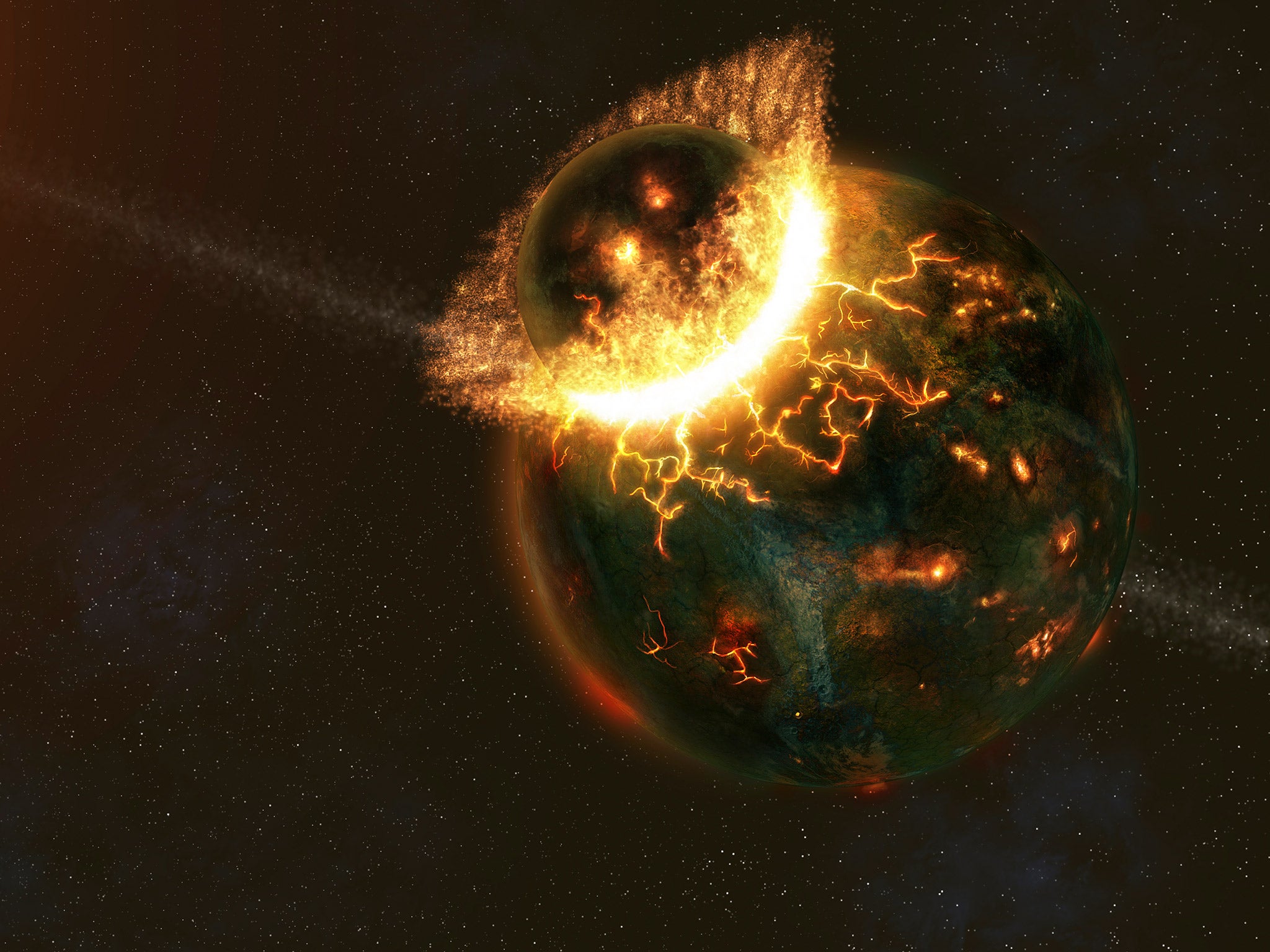Earth's collision with a Mercury-like planet may have been vital to life flourishing, scientists say
The study raises fresh questions about how the Earth ended up in its present state

A massive collision between a Mercury-like planet and the early Earth could have taken place billions of years ago to create the vital planetary conditions that have allowed life to flourish, a study has suggested.
An analysis of the elements making up the Earth’s crust and mantle suggest that such a collision in the distant past could help to account for the heat of the planet’s core. It is this heat that drives the movement of molten iron at the centre of the Earth, which generates the magnetic shield protecting the planet against damaging cosmic radiation.
Scientists said the crust and mantle contain a higher ratio of samarium to neodymium – two rare-earth metals – than what is seen in meteorites. This suggests that something else happened during the early collisions of the Earth other then the continual bombardment by meteorites.
One intriguing possibility is that a Mercury-like body, which was rich in sulphur, became incorporated into the Earth following a gigantic collision. This sulphur would have helped to trigger chemistry that led to the balance of samarium to neodymium seen today, the scientists said.
More importantly for life on Earth, the collision and the addition of sulphur to the early planet would have generated the source of heat that drives the “geo-dynamo” responsible for creating the planet’s magnetic field, which protects against cosmic radiation from space and allows liquid water and life to exist at the surface.
Anke Wohlers and Bernard Wood of Oxford University show that the apparent anomaly in the ratio of samarium to neodymium in the earth’s crust and mantle – which is not what is expected if they came here solely as a result of meteorite bombardments – could have arrived with a collision between Earth and a smaller, Mercury-like planet.
Earth was made by Jupiter clattering through the universe and destroying small planet
Earth's 'underground oceans' could have three times more water than the surface
Further proof that the Moon was created by massive collision
As a result of the creation of a sulphur-rich core, radioactive uranium and thorium were produced and this generated the heat needed to drive the convection currents of molten iron that create the Earth’s magnetic field, the scientists said in their study published in the journal Nature.
The computer model devised by the scientists appears to solve the problem of the missing heat source of the dynamo, however the study raises fresh questions about how the Earth ended up in its present state, said Richard Carlson of the Carnegie Institution for Science in Washington DC.
“The energy source that drives the generation of the Earth’s magnetic field in the core has long been a topic of discussion,” Dr Carlson said.
Join our commenting forum
Join thought-provoking conversations, follow other Independent readers and see their replies
Comments